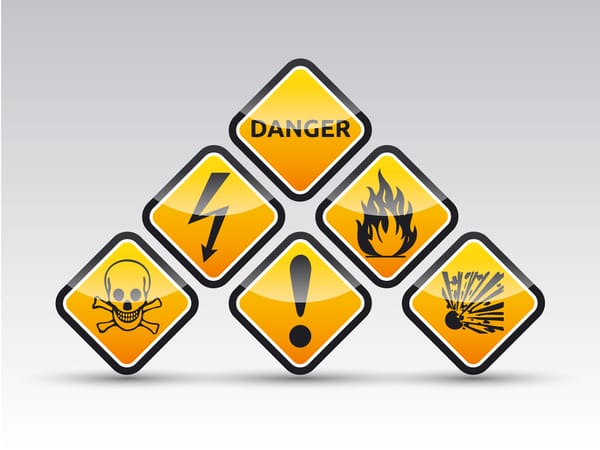What’s in a sign?
Due to COVID-19, we are now all very familiar with the sight of signs around our workplaces and social environments, warning us of the dangers of the virus and the steps that must be taken to prevent its spread. But how have we managed before now without a multitude of signs to warn us dangers in the workplace?
Signage, although at the bottom of the hierarchy of controls, may in fact be an extremely effective and important tool for managing risks in the workplace. Whether it relates to emergency exit signage or more signage for a traffic management plan, the fact is that signs do provide a useful mechanism to guide and instruct your workforce on how to safely manage risks at the worksite and warn them of dangers.
The COVID-19 pandemic highlights both the benefits and downsides of signage. There is no doubt that the signs for COVID-19 have been clear and effective in their messaging. Large adhesives on public transport seating leaves no doubt as to where a person should safely position themselves. But signage can also lead to complacency – see too many signs regarding hand-washing and the mind may start to fade out the message.
What should your organisation do?
You will need to assess the risks at your workplace to identify areas where signage will assist in guiding and warning your workers.
Some key areas where signage is needed include:
- areas where mobile plant might interact with pedestrians;
- wherever dangerous goods or hazardous substances exist, including highly flammable or toxic materials;
- where there is a risk of serious injury, e.g. risk of slipping or falling, or being hit by a falling object;
- confined spaces;
- areas containing asbestos;
- wherever hazards exist that are not immediately obvious to a person working in or near an area;
- emergency exit routes and first aid facilities;
- restricted areas;
- where there are electric hazards;
- areas or tasks where personal protective equipment (PPE) must be worn by workers, e.g. hearing protection for noise exposure; and
- on plant and equipment requiring mandatory procedures, e.g. ensuring a guard is on place on a machine prior to its operation.
When it comes to preparing signage, you can use the resources provided in the Australian Standards. But also keep in mind the following simple guidelines:
- use simple, clear language and bright colours to make the sign stand out;
- use different languages if more than one language is commonly spoken in your workplace;
- including symbols and diagrams that can easily be understood by all people in your workplace, including workers who do not speak English as a first language;
- make the sign clearly visible for anyone who could be affected by the hazard or risk, with text large enough to be read from a distance;
- ensure the sign is located in an appropriate place, i.e. near the hazard or risk;
- make sure workers have knowledge of the hazard or risk, particularly workers likely to be affected by it; and
- ensure workers are instructed in the meaning of all signs and how to comply with them.
From the experts behind the Health & Safety Handbook, the Bulletin brings you the latest work health and safety news, legal updates, case law and practical advice straight to your inbox every week.

